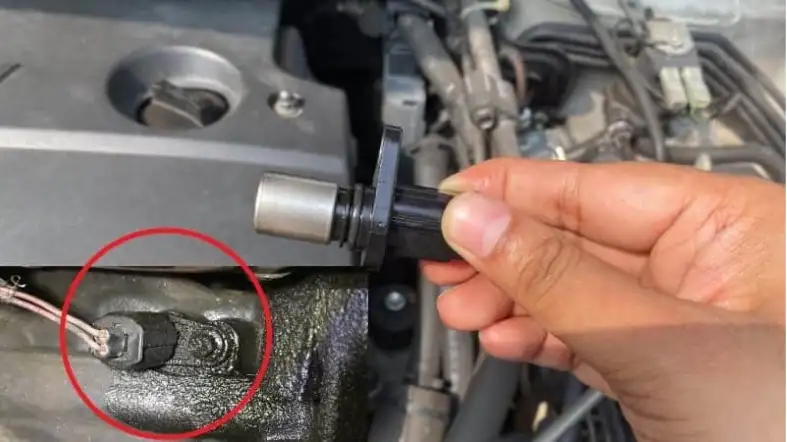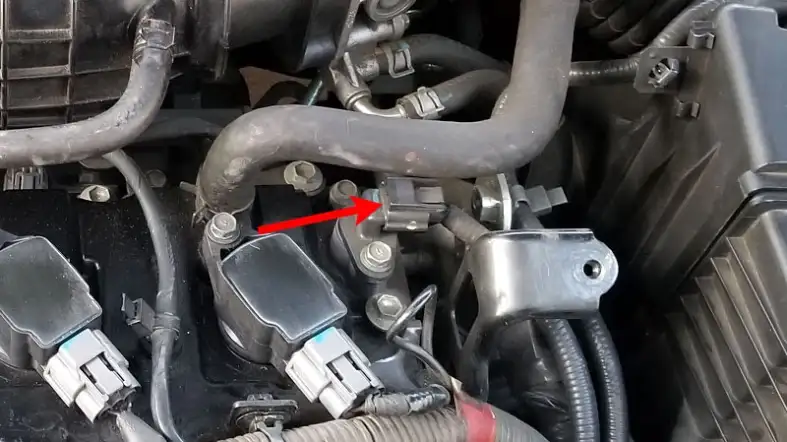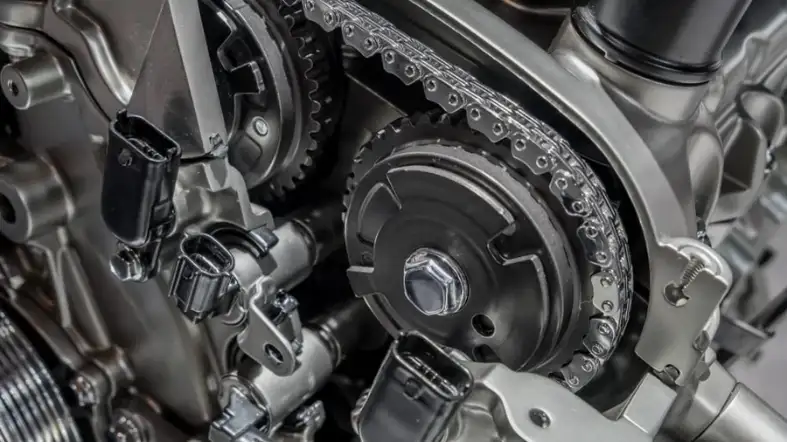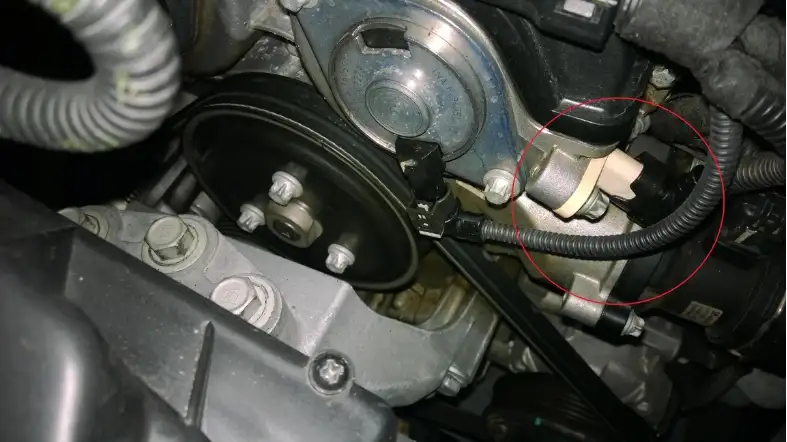Have you ever experienced a sudden loss of power or strange noises coming from your engine?
One potential culprit that often gets overlooked is the camshaft position sensor.
This little device plays a crucial role in keeping your engine running smoothly, but it can be affected by a wide range of factors, including low oil levels.
In this blog, we’ll explore the connection between low oil and camshaft position sensor issues, and provide some tips on how to prevent these problems from occurring in the first place.
So, if you’re ready to dive into the fascinating world of automotive engineering, read on!
Can low oil cause camshaft position sensor?
Yes, a low oil level can cause problems with the camshaft position sensor. This is because the sensor relies on proper lubrication to function correctly.

When the oil level is too low, it can cause the sensor to malfunction or fail altogether.
It’s important to keep your oil level within the recommended range to ensure all components in your engine, including the camshaft position sensor, are working properly.
How Does the Camshaft Position Sensor Work?
A camshaft position sensor provides important information to the engine control unit (ECU) about the position and speed of the camshaft.
Here’s how a camshaft position sensor works, step by step:
1. The camshaft position sensor is typically located near the camshaft. It consists of a magnetic sensor and a toothed wheel attached to the camshaft.
2. As the camshaft rotates, the toothed wheel passes by the magnetic sensor. The magnetic sensor detects the teeth on the wheel and generates an electrical signal.
3. The electrical signal is sent to the engine control unit (ECU), which processes the signal to determine the position and speed of the camshaft.
4. The ECU uses this information to control various engine functions, such as fuel injection timing, ignition timing, and valve timing.
5. If the camshaft position sensor fails, the engine may not start, or it may run poorly. This is because the ECU relies on the camshaft position sensor to accurately control engine functions.
What are the effects of Low Oil on the Camshaft Position Sensor?

Low oil levels can have a significant impact on the camshaft position sensor, and it’s essential to understand these effects to prevent costly repairs or accidents.
Here are some of the effects of low oil on the camshaft position sensor:
1. Increased Friction:
When oil levels are low, the friction between engine parts, including the camshaft, increases.
Increased friction can lead to premature wear and tear of the camshaft, which can then affect the position sensor.
2. Overheating:
Low oil levels can cause the engine to overheat, which can damage the camshaft position sensor.
Overheating can also cause other engine components to fail, leading to costly repairs.
3. Poor Lubrication:
The camshaft position sensor requires proper lubrication to function correctly. Low oil levels can lead to poor lubrication, which can cause the sensor to malfunction or fail.
4. Incorrect Readings:
The camshaft position sensor’s job is to determine the exact position of the camshaft to ensure that the engine runs smoothly.
When the oil levels are low, the camshaft may not rotate correctly, causing the sensor to send incorrect readings to the engine control module.
5. Engine Stalling:
In extreme cases, low oil levels can cause the camshaft to seize up, which can cause the engine to stall or fail.
A failing camshaft can also damage other engine components, leading to costly repairs.
What are the Signs of Camshaft Position Sensor Problems?

A faulty camshaft position sensor can cause a variety of engine problems, and it’s important to recognize the signs of a failing sensor early on to prevent further damage.
Here are some common signs of camshaft position sensor problems:
1. Check engine light:
If your vehicle’s check engine light comes on, it’s important to have it checked by a professional mechanic as soon as possible.
The check engine light can be triggered by a variety of problems, including a malfunctioning camshaft position sensor.
2. Rough idling:
A faulty camshaft position sensor can cause your engine to idle roughly or even stall.
You may notice the engine shaking or vibrating when the car is idle, or it may stall out completely.
3. Engine misfires:
If the camshaft position sensor is sending incorrect information to the engine control module (ECM), it can cause misfires or hesitation during acceleration.
You may notice a loss of power or a rough-running engine while driving.
4. Decreased fuel efficiency:
A malfunctioning camshaft position sensor can cause the engine to run rich or lean, which can result in decreased fuel efficiency.
You may notice a decrease in gas mileage or that you’re filling up more often than usual.
5. Difficulty starting:
If the camshaft position sensor is failing, it may be difficult to start the engine. You may have to turn the key multiple times or pump the gas pedal to get the engine to turn over.
6. Stalling:
A failing camshaft position sensor can cause your engine to stall while driving, which can be a dangerous situation.
If your engine stalls while driving, pull over to a safe location and have the vehicle towed to a mechanic for repair.
What are the causes of low oil in engines?
When it comes to the health of your vehicle’s engine, one of the most critical factors to consider is the oil level.
Low oil levels can lead to a variety of issues and potentially cause severe damage to your car’s engine.
In this response, I will discuss the primary causes of low engine oil levels and their effects on your vehicle.
1. Oil Leaks:
Oil leaks are one of the most common causes of low engine oil levels.
A leak in your vehicle’s oil system can occur due to a damaged oil pan, loose drain plug, damaged oil filter, or a damaged valve cover gasket.
A leak can cause the engine to lose oil gradually over time, leading to a low oil level.
2. Oil Consumption:
Over time, engines can consume oil as they run, leading to a lower oil level.
Oil consumption can occur due to several reasons such as worn piston rings, faulty valve seals, or a clogged PCV valve.
It’s essential to check your oil level regularly to ensure that your engine is not consuming oil.
3. Negligence:
Negligence is another common cause of low engine oil levels. Failure to check your oil level regularly can lead to a low oil level.
Additionally, failing to change your oil at the recommended intervals can cause the oil to break down and become less effective at lubricating the engine, leading to a low oil level.
4. Overfilling:
Overfilling engine oil can also cause low oil levels. Overfilling can lead to excess oil frothing, which can cause a drop in oil pressure and potentially damage your engine.
How to Prevent Camshaft Position Sensor Failure Due to Low Oil?

Camshaft position sensors can fail due to low oil pressure, which can cause serious engine damage if left unchecked.
Here are some tips to prevent camshaft position sensor failure due to low oil:
1. Regular Oil Changes:
The easiest and most effective way to prevent low oil pressure is to change your engine oil regularly.
Check your vehicle owner’s manual for the recommended oil change interval and stick to it.
This will ensure that the oil is clean and free from contaminants that can cause it to break down and lose its lubricating properties.
2. Use the Correct Oil:
It’s important to use the correct type and viscosity of oil recommended by the manufacturer for your vehicle.
Using the wrong type or viscosity of oil can cause excessive wear and tear on engine components, including the camshaft position sensor.
3. Check Oil Level:
Check your engine oil level regularly using the dipstick. If the oil level is low, add more oil immediately.
Running your engine with a low oil level can cause the oil pressure to drop, which can lead to camshaft position sensor failure.
4. Check Oil Pressure:
You can also check your oil pressure using a gauge or by monitoring the oil pressure warning light on your dashboard.
If the oil pressure is low, have your engine checked by a qualified mechanic as soon as possible.
5. Fix Leaks:
If you notice oil leaks around your engine, have them repaired immediately.
Oil leaks can cause the oil level to drop and reduce oil pressure, which can cause camshaft position sensor failure.
6. Avoid Overloading:
Avoid overloading your vehicle beyond its recommended capacity.
Overloading can cause excessive strain on your engine, which can lead to low oil pressure and camshaft position sensor failure.
FAQs
What Are Some Signs That The Camshaft Position Sensor Is Malfunctioning Due To Low Oil?
Some common symptoms of a malfunctioning camshaft position sensor due to low oil include engine misfires, rough idling, stalling, decreased fuel efficiency, and difficulty starting the engine.
How Can I Prevent Issues With The Camshaft Position Sensor Caused By Low Oil?
The best way to prevent issues with the camshaft position sensor is to maintain proper oil levels and change your oil according to the manufacturer’s recommended schedule.
Regular oil changes help ensure that the engine’s moving parts stay properly lubricated and reduce the risk of sensor malfunctions.
Can A Faulty Camshaft Position Sensor Cause Other Issues Besides Low Oil?
Yes, a faulty camshaft position sensor can cause a variety of issues, including poor engine performance, decreased fuel efficiency, and difficulty starting the engine.
It’s important to address any issues with the sensor as soon as possible to avoid further damage to the engine.
How Can I Tell If The Camshaft Position Sensor Is Faulty?
Some common signs of a faulty camshaft position sensor include engine misfires, rough idling, stalling, decreased fuel efficiency, and difficulty starting the engine.
You may also see warning lights on your dashboard, such as the check engine light if the sensor is malfunctioning.
If you suspect an issue with the sensor, it’s important to have it diagnosed and repaired by a qualified mechanic.
Conclusion
It is possible for low oil levels to cause issues with the camshaft position sensor in your vehicle.
This is because the sensor relies on proper lubrication to function correctly.
When the oil level is low, the engine components may not be properly lubricated, leading to increased friction and wear.
This can cause the camshaft to become misaligned or damaged, which in turn can affect the operation of the camshaft position sensor.
It’s important to regularly check your oil levels and top up as necessary to prevent any potential issues.
